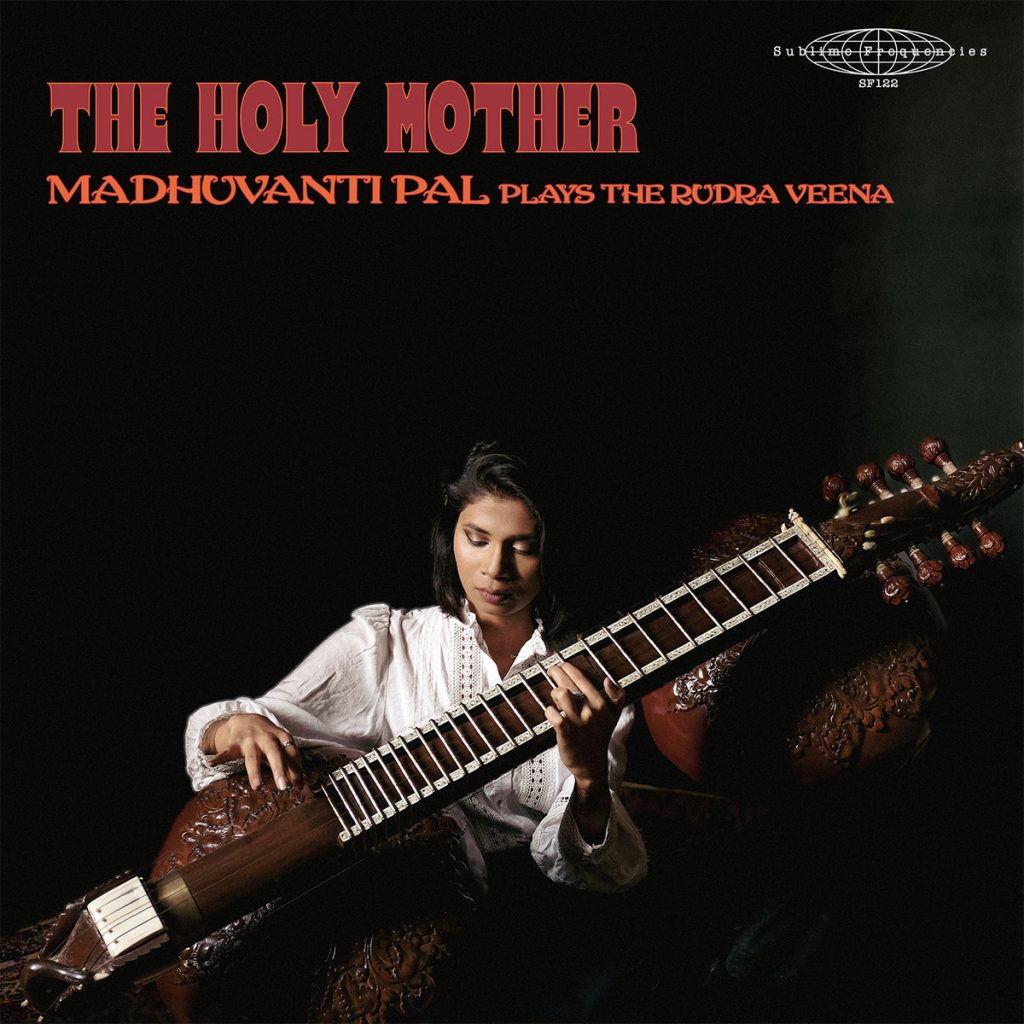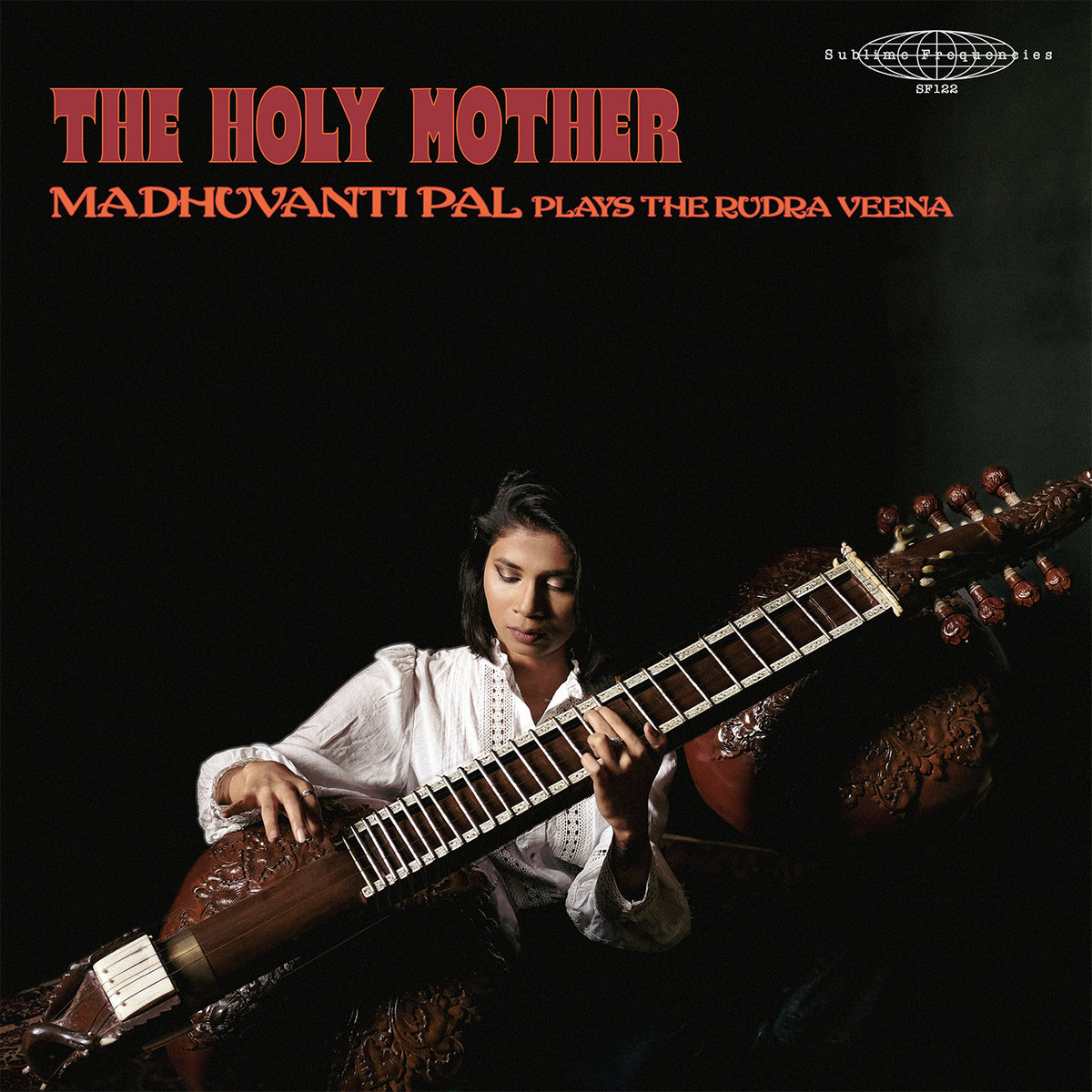
The Holy Mother (Plays The Rudra Veena) is the vinyl debut from Madhuvanti Pal. The relationship between femininity and the rudra veena is complicated. The instrument, which has been depicted in portraits and on temple walls for centuries, is made from a string zither stretched across two resonating gourds. Its similarity to the female form is obvious, and if you go back far enough, there are images of women playing them. But as times changed in India and the instrument became locked into a societal role as an accessory to prosperity (in other words, rich folks supported the people who played them), women were discouraged from touching the instrument—and even told that its low frequencies might interfere with their fertility.
Over the past couple centuries, the rudra veena had gone out of fashion, eclipsed by the sitar and surbahar, but it has enjoyed a resurgence of interest in recent decades. Still, when Pal, who was born in 1992 and grew up playing violin and singing khayal (an Indian classical song form), got interested in the rudra veena, she faced obstacles. Even after she ignored advice telling her to not study it, Pal ended up with a inadequate instrument, a problem she resolved by learning how to build her own. Moreover, Pal recorded the two ragas (“Todi” and “Bhairavi”) heard on this LP by herself, in her apartment. But this DIY signal chain doesn’t result in any rookie roughness; the rudra veena’s low frequencies register without distortion.
Listeners more familiar with the sitar are in for a treat, provided they have the patience to sit still for it. The rudra veena doesn’t lend itself to lightning runs or displays of bravado. It’s more like a lap-steel guitar in that it’s played with a slide, and one measure of players is in their ability to invest contoured lines with emotion. Another, more universal concern is the musician’s capacity to improvise within a raga’s structure in order to build and sustain an arc that coheres over the long haul. On both counts, Pal delivers. If you’ve ever been moved by a swooping blues lick or some ascending feedback, you’ve got sufficient background to luxuriate in her patient explorations.
—Bill Meyer






